



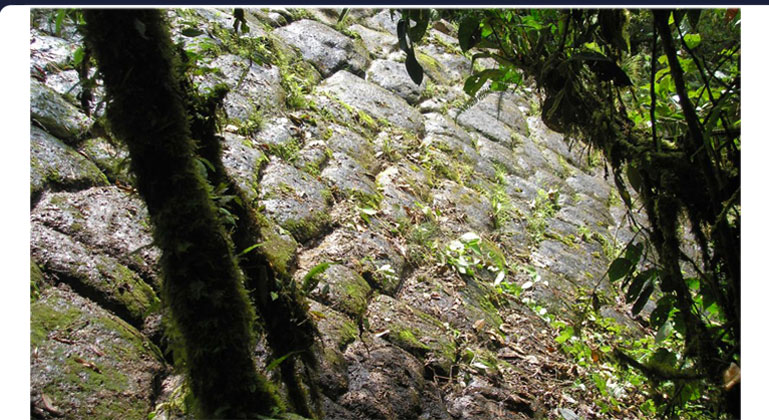
Resonance in the Llanganates Pyramids of Ecuador
by Alex Putney for Human-Resonance.org
September 13, 2014
Located in the Ecuador's Tungurahua province, an ancient pyramid structure only a dozen miles from the active volcano has been uncovered by a small landslide caused by water cascading down one of its steeply inclined faces. Residents of the small town of Colonia Azuay, in the Rio Negro region of the Llanganates Mountains, accidentally discovered the megalithic pyramid site a few decades ago.
Expedition video by Manuel Vieira and friends obtained in 2011 and 2012 brought local attention, as well as later expeditions produced for worldwide media hype regarding false claims of giants associated with this ancient monumental site. Aerial imagery of the location provides surprisingly little definition of subsoil architectural features due to the dense rainforest canopy of the area, which deposits great amounts of soil over many thousands of years to obscure virtually all traces of the ancient Paleo-Sanskrit civilization.
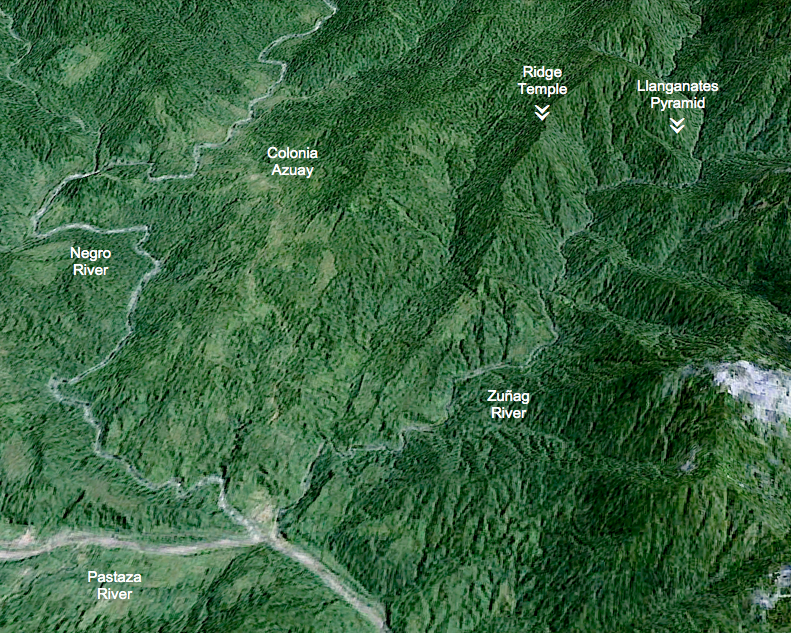
The Llanganates Pyramid Complex, Ecuador (1.3597°S 78.1533°W) is situated exactly 7,421 miles from the Great Pyramid, representing 29.81% of Earth's mean circumference. At this interval, infrasound causes fires in Death Valley and Calaveras, and a seismic tear in Huacullani. Throughout the streams cutting down into this site are timeworn remnants of piezoelectric stone walkways, ledges and refaçaded mountainsides that are highly similar to the pyramid complex simultaneously being uncovered in La Maná, Ecuador.
The impressive scale of this pyramid complex can only be guessed at, as all detailed satellite data and remote sensing surveys have been completely denied to the general public. Large, exposed sections of wall and foundation stones that have drawn so many visitors do not comprise a single, solitary pyramid construction, but represent the most exposed structure of a megalithic complex cast in geopolymer basalts.
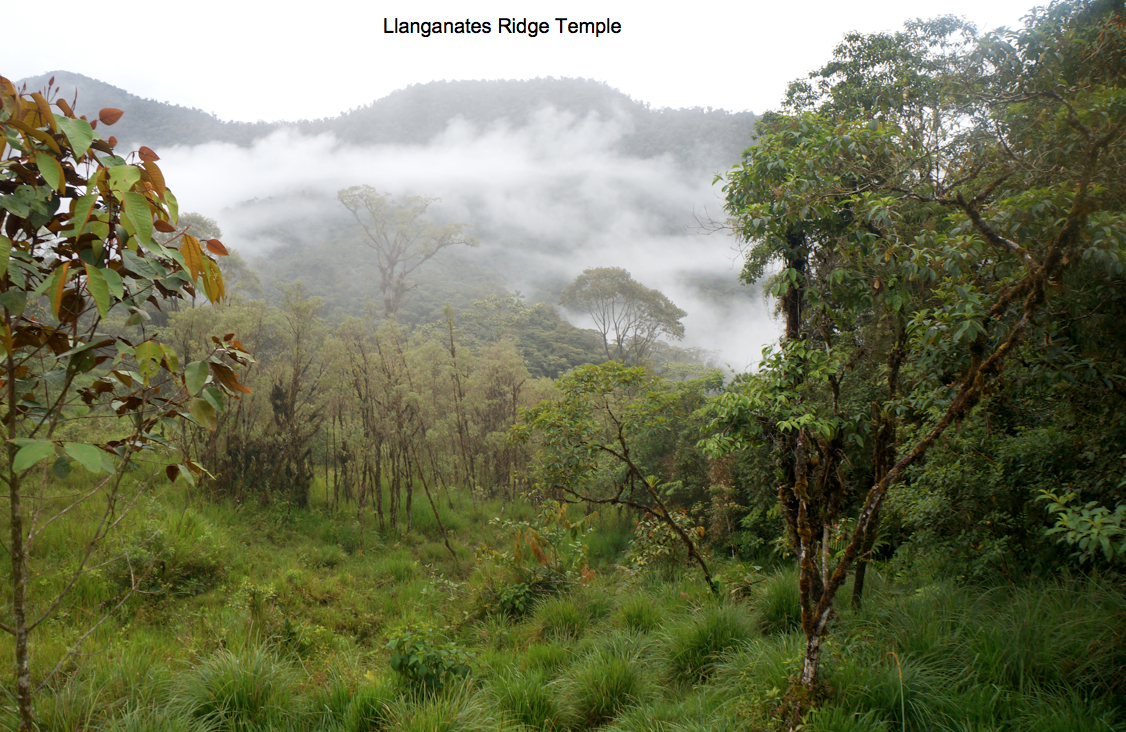
Due west of the main pyramid is a raised, horizontal section of high ridgeline that conforms to a perfect North-South alignment, and once commanded a great view of the entire Llanganates complex during its long period of use, before the giant trees took their hold by root.
Identified here for the first time as the Llanganates Ridge Temple (1.3611°S 78.1687°W), this axis-symmetric subsurface feature (above) constitutes a major megalithic monumental construction exceeding 80m in length and likely linked to adjacent temples below and further above by reinforced stone walkways.
No excavations or significant exploration of the Ridge Temple have been conducted, yet the extreme angle of the ridgeline assures that the soil adept has been consistently reduced along the sides of the structure over time. Streams of water divulge most visible traces of these ancient underlying mega-structures by carving pathways of least resistance as the flow downward with gravity. The clearest and most abundance examples of ancient stonework collect in the lower areas of the valleys where greater waterflow clears off larger areas of jungle undergrowth.
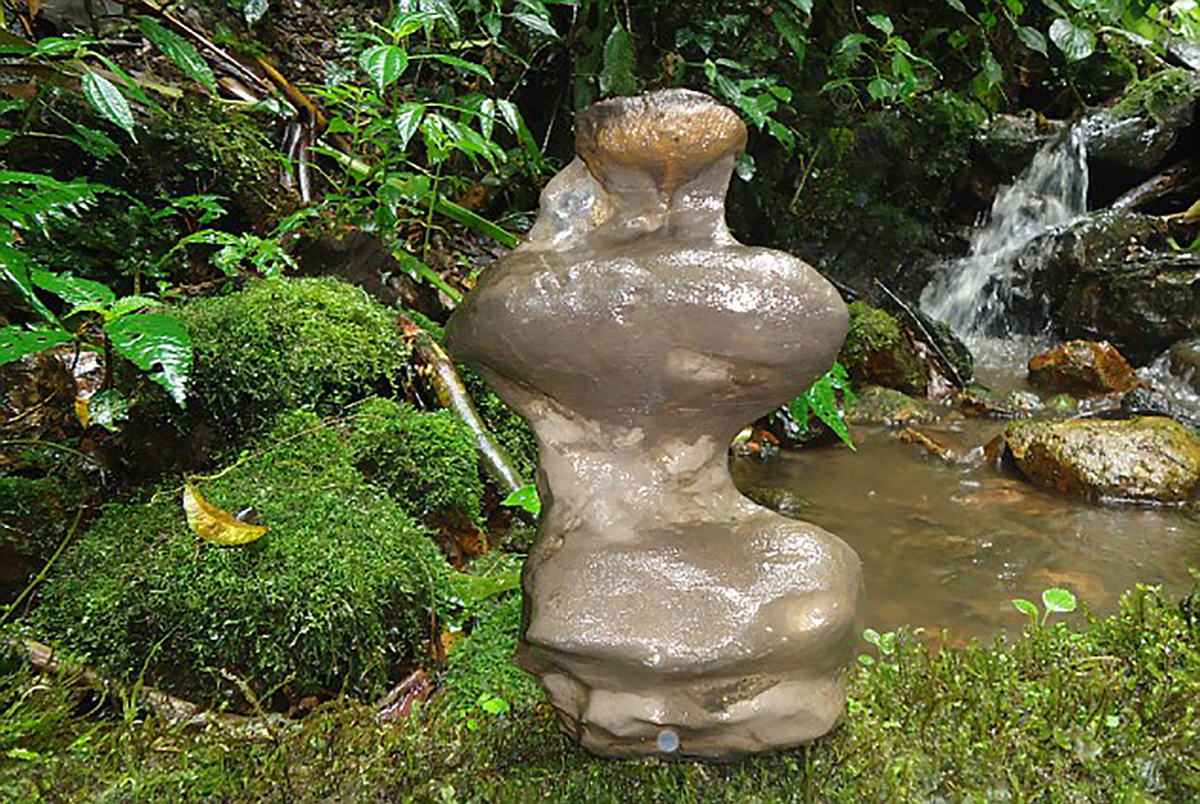
Many unusual forms of river stones collect at the bottom of these steep river canyons that block easy entry to these densely forested pyramid sites. Perfectly flat faces are contrasted by bulbous formations (above).
Manuel Vieira captured the first significant documentary footage made public, presenting the extreme hardness and heaviness of oddly shaped stones encountered during the long river access entry hike into the Llanganates Pyramid Complex that have been observed at several other related ancient sites:
We are finding cut rocks along the way. Over there are other stones that they're removing.
What does it measure?
It measures approximately 40cm in length.
And how much do you think it weighs?
It weighs... some 10 lbs... --some 15 lbs.
And it has the form of a 'hammer', a tool... Of these, it is the second we found in the zone, and its very heavy. It has quite a strong constitution.
This is the third 'hammer' we have found.
For grinding something, because it seems to be a mortar. It is... 25cm... by 30cm... and by 20cm.
Yes... look... look... Each time we are getting close to the location that we want to arrive at: the Wall.
Here he has found some stones, very interesting... polished stones. One can't consider these as naturally formed stones. Straight stones, and this one looks like a water canal.
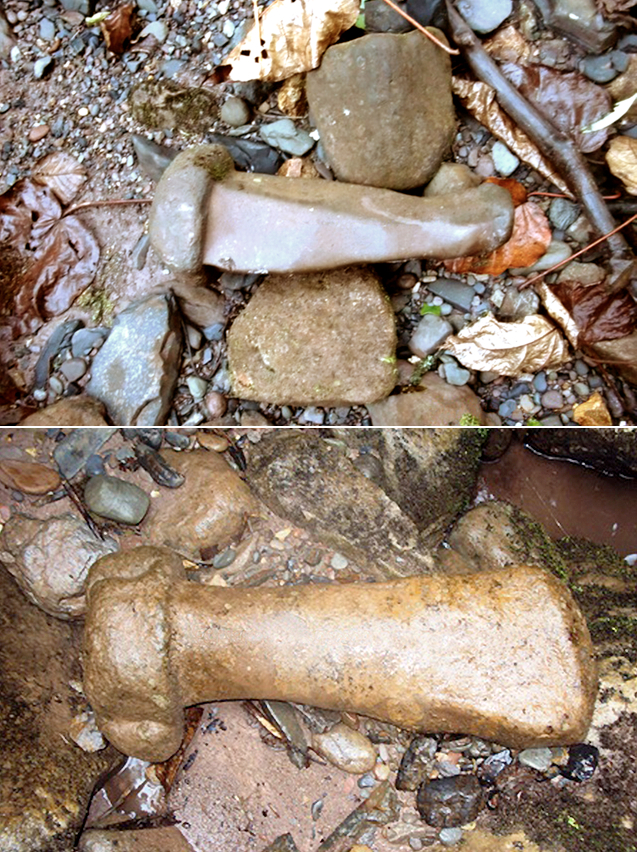
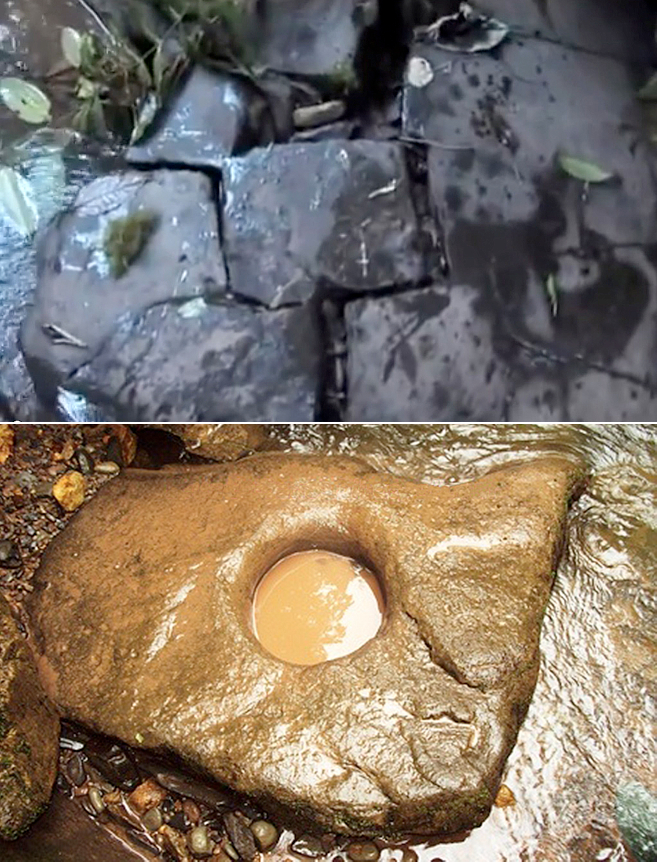
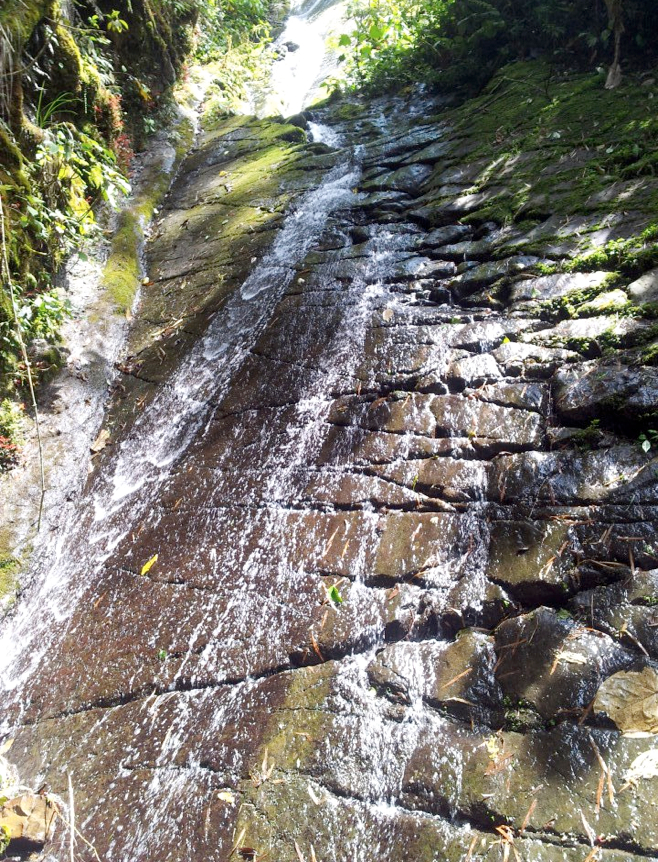
Standing along a safe, narrow landing located exactly halfway up the steadily sloping waterfall, an explorer/filmmaker describes his immediate impression of the stark regularity of the stepped structures that fully extend from the bottom of the sheer face to the top. He describes the regular stepped features as 'grades':
We are at the middle of the waterfall. One can observe this system of grades... One can look over the structure of the wall, the forms of stones: squared, rectangular, and made in the form of a rhombus --perfectly perpendicular.
A waterfall flowing down a rock wall. A wall constructed by human beings. Very straight, no? This is the line; it goes from here, straight down below.
Look at the line... of the union of the stones. They are large stones of 1.5m in height. This is a vertical line of union. There are other lines of horizontal unions. And also in the form of rhomboids, on the other side.
All of this, if cleaned, is more than 100m of wall covered by vegetation. This is part of conjoined archeological vestiges of a very large system of construction.
Its really surprising, what we are, at this moment, having the privilege to be present in this beautiful site, for the Nature, and very interesting, for the mysteries it raises: Who built them? With what objective? For what? Why did they make such an effort?
This is the other vertical line of the wall. It's an immense wall. An immense wall of stone. And from below, uncovered by a waterfall. These are the remains of a wall, rocks perfectly fitted. Look at the cuts...
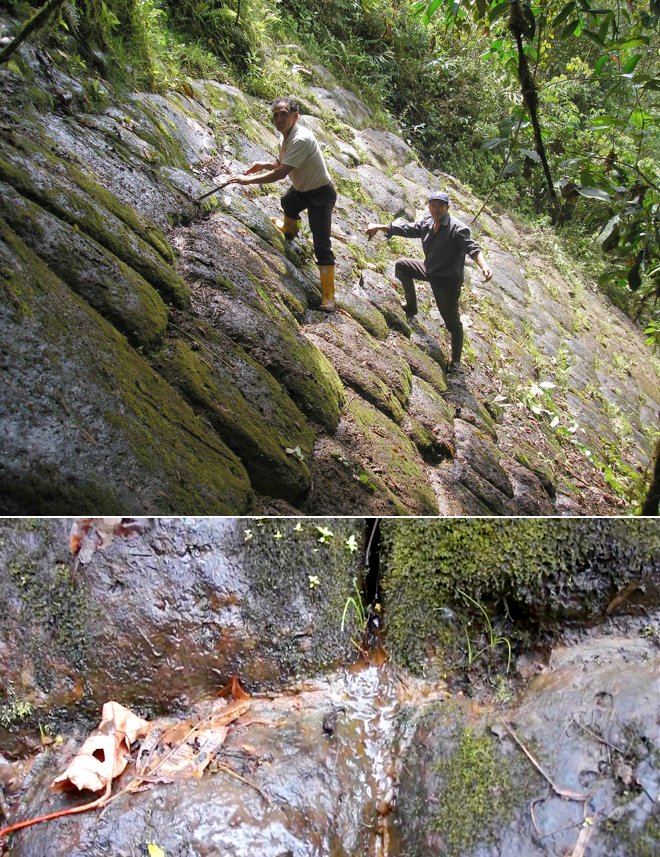
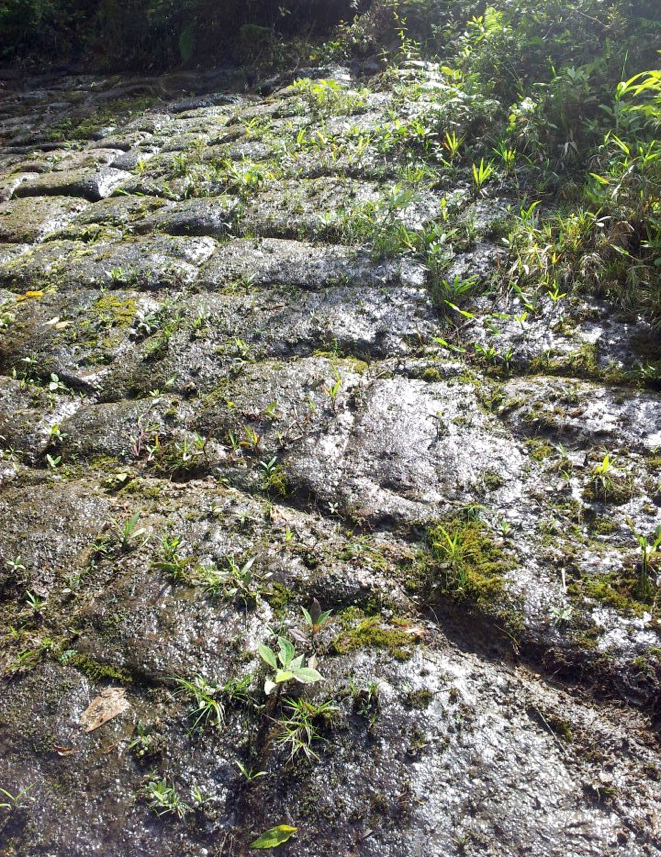
Continue to The Altavista Ruins
Return to Jupiter & Roman Concrete
From the book Magnetic Center
Copyright 2014-2015 Alexander Putney